Raptors, the majestic birds of prey, are renowned for their formidable hunting skills and striking appearances. Among these, certain species boast crown-like crests that add an extra touch of regality to their presence. Let’s explore ten such raptors that wear their crests like nature’s own crowns.
Crested Caracara: The Opportunistic Forager
The Crested Caracara, often dubbed the “Mexican eagle,” is a distinctive raptor found across the Americas. Its shaggy black crest contrasts sharply with its white neck and orange facial skin, giving it a noble appearance. Unlike typical falcons, this bird is frequently seen walking on the ground, scavenging for carrion or hunting small prey. Its adaptability allows it to thrive in diverse habitats, from open grasslands to urban areas. Interestingly, despite its eagle-like demeanor, the Crested Caracara is more closely related to falcons. Its presence is often marked by a distinctive, rattling call that resonates across its territory.
Harpy Eagle: The Forest Monarch
The Harpy Eagle, one of the largest and most powerful raptors, reigns over the tropical forests of Central and South America. Its impressive double crest of feathers can be raised to form a striking crown, enhancing its formidable presence. This eagle primarily hunts large mammals like sloths and monkeys, showcasing its strength and agility. The Harpy Eagle’s talons are among the most powerful in the bird world, capable of exerting immense pressure to capture prey. Its piercing eyes and sharp beak make it a top predator in its ecosystem. Despite its prowess, habitat destruction poses a significant threat to its population.
Secretary Bird: The Snake Slayer
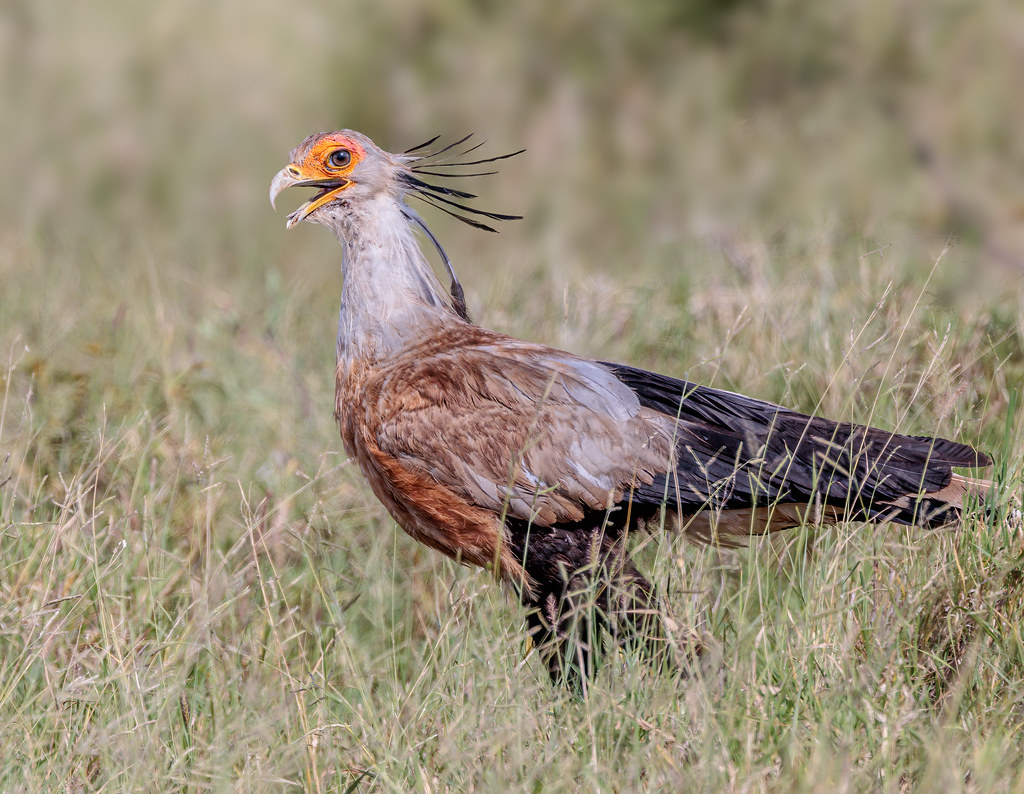
Native to the open savannas of Africa, the Secretary Bird is easily recognizable by its long legs and unique crest of long, quill-like feathers. This terrestrial raptor is famed for its hunting technique, stomping on snakes and other prey with powerful kicks. Its name is believed to derive from the quill-like feathers that resemble the pens secretaries once tucked behind their ears. The Secretary Bird’s diet isn’t limited to snakes; it also preys on insects, small mammals, and birds. Its distinctive gait and striking appearance make it a favorite among bird enthusiasts. Conservation efforts are crucial as habitat loss threatens its numbers.
Crowned Eagle: The Canopy Hunter
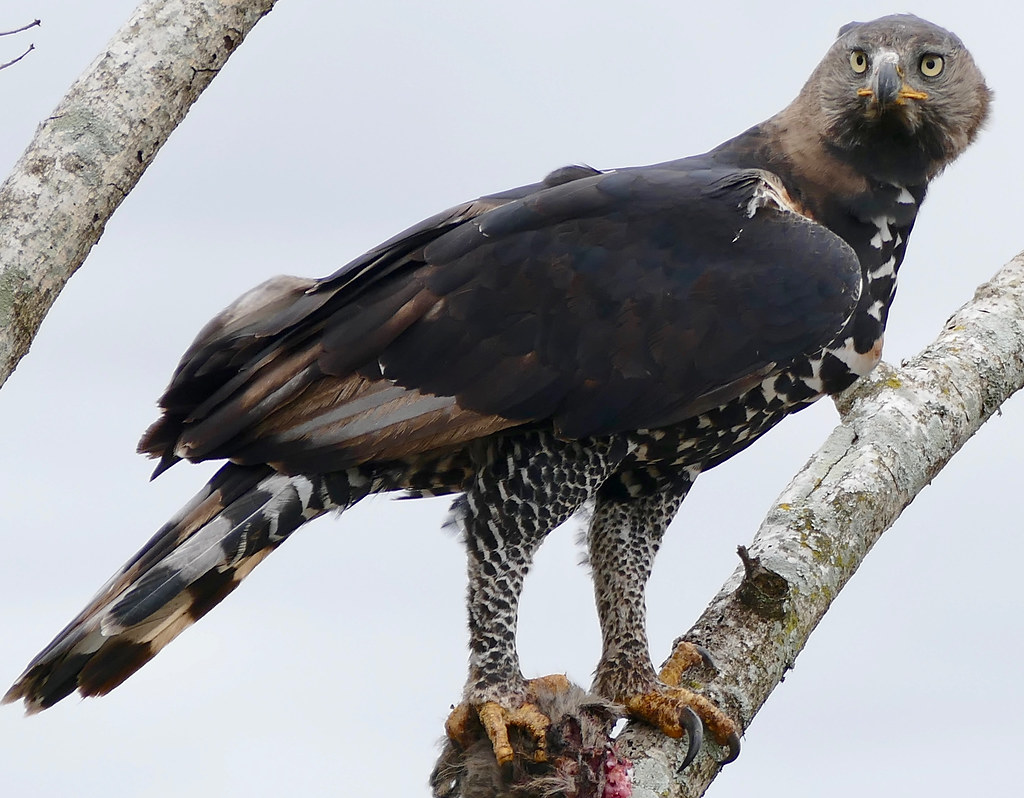
The Crowned Eagle, also known as the African Crowned Eagle, is a formidable predator of sub-Saharan forests. Its prominent crest and piercing eyes give it a regal appearance. This eagle is known for its strength, capable of hunting prey larger than itself, including monkeys and small antelopes. Its powerful talons can exert immense pressure, making it one of the most powerful eagles relative to its size. The Crowned Eagle’s haunting calls echo through the forest, signaling its presence. Deforestation and human encroachment pose significant threats to its habitat and survival.
Crested Serpent Eagle: The Reptile Specialist
Found across tropical Asia, the Crested Serpent Eagle is named for its diet, which predominantly consists of snakes. Its distinctive crest and piercing yellow eyes make it easily identifiable. This eagle prefers forested habitats, where it perches silently before swooping down on unsuspecting reptiles. Its broad wings and short tail aid in maneuvering through dense foliage. The Crested Serpent Eagle’s call is a loud, piercing whistle, often heard during the breeding season. Despite its specialized diet, it occasionally preys on small mammals and birds.
Crested Honey Buzzard: The Wasp Warrior
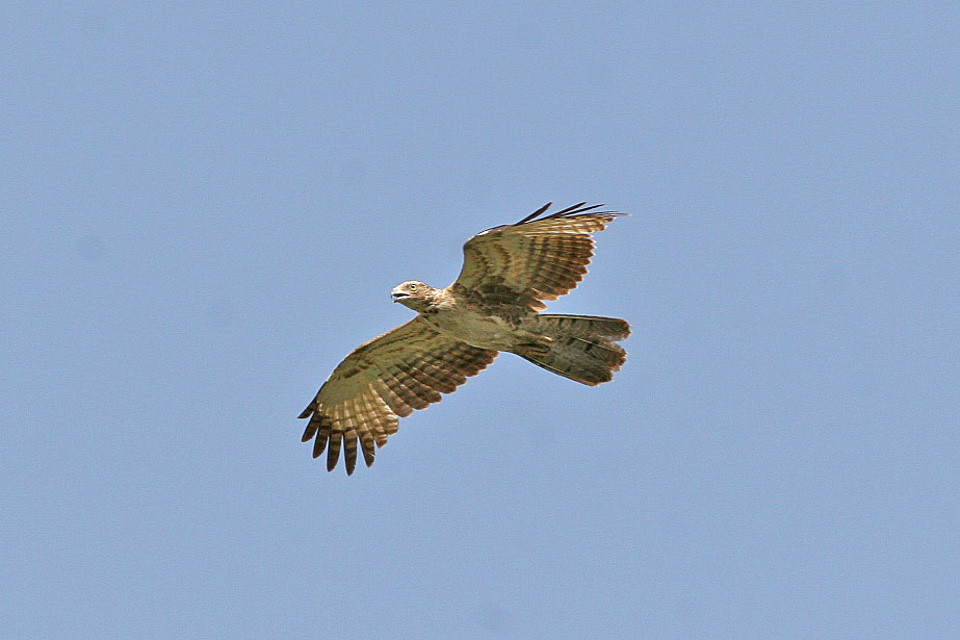
The Crested Honey Buzzard, also known as the Oriental Honey Buzzard, has a unique diet that sets it apart from other raptors. It primarily feeds on the larvae of bees and wasps, raiding nests with specialized adaptations. Its elongated head and dense feathers protect it from stings, while its crest adds to its distinctive look. This buzzard’s migration patterns span vast distances, from Siberia to Southeast Asia. Its ability to digest wasp venom showcases its remarkable evolutionary adaptations. The Crested Honey Buzzard’s presence is often indicated by the disturbed hives it leaves behind.
Crested Goshawk: The Agile Predator
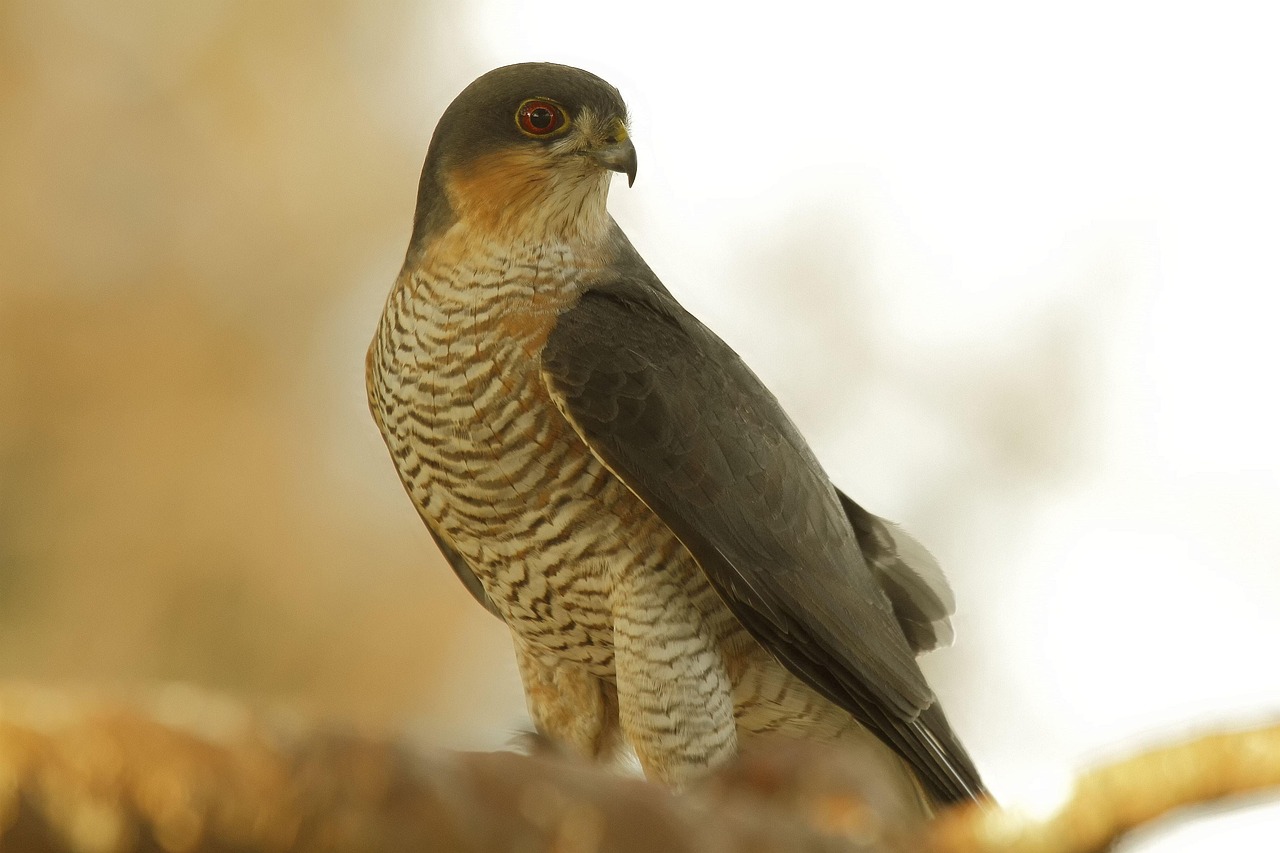
The Crested Goshawk is a medium-sized raptor found in the forests of Asia. Its short crest and sharp talons make it a formidable hunter of birds and small mammals. This goshawk is known for its agility, navigating through dense canopies to ambush prey. Its plumage provides excellent camouflage among the trees, aiding in stealthy approaches. The Crested Goshawk’s piercing calls are often heard during the breeding season. Deforestation poses a threat to its habitat, emphasizing the need for conservation efforts.
Philippine Eagle: The Monkey-Eating Giant
The Philippine Eagle, also known as the Monkey-Eating Eagle, is one of the world’s largest and rarest raptors. Its shaggy crest and massive size give it a commanding presence. Endemic to the Philippines, this eagle primarily hunts monkeys and other mammals in dense forests. Its powerful beak and talons make it an apex predator in its habitat. The Philippine Eagle’s piercing eyes can spot prey from great distances. Conservation efforts are critical, as deforestation and hunting have severely impacted its population.
Long-crested Eagle: The Perched Hunter
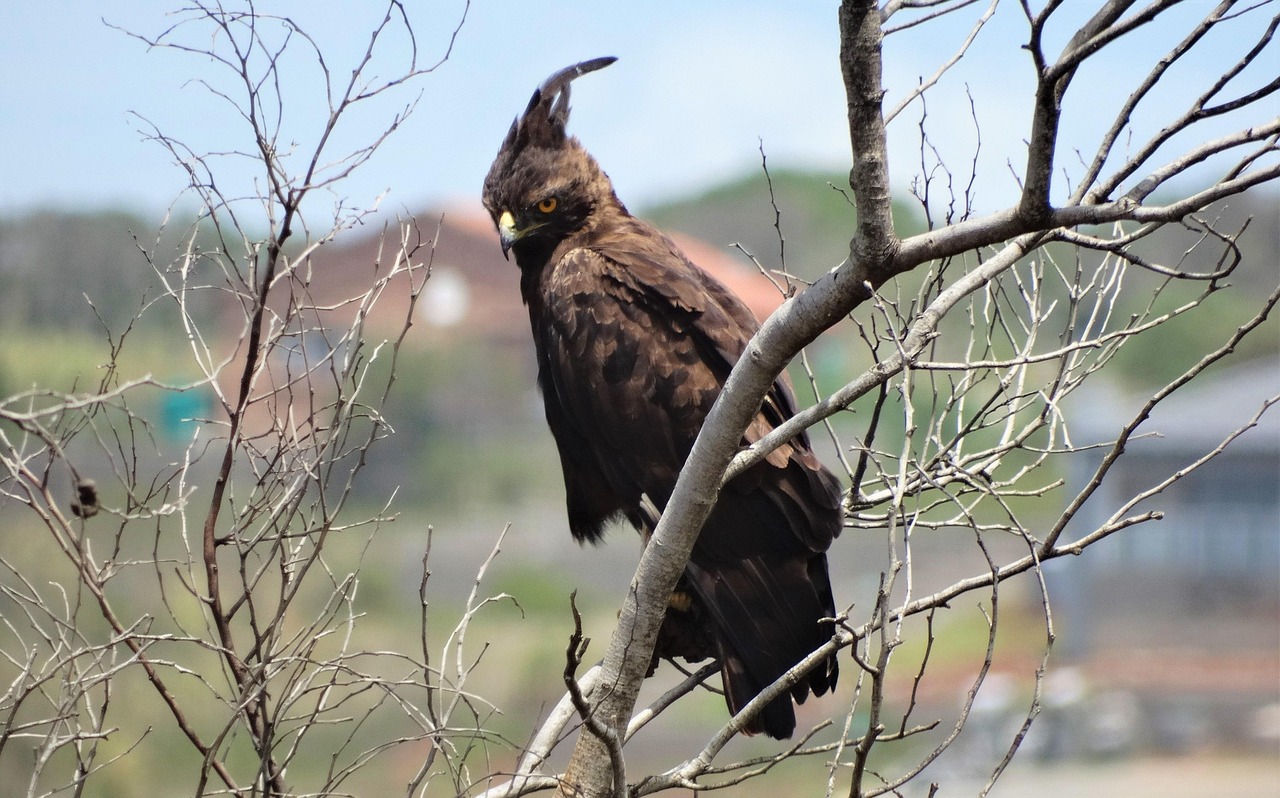
The Long-crested Eagle is a striking raptor found in sub-Saharan Africa. Its long, shaggy crest and dark plumage make it easily recognizable. This eagle prefers open woodlands and savannas, often seen perched on poles or trees, scanning for rodents. Its hunting technique involves swooping down swiftly to capture prey. The Long-crested Eagle’s call is a series of high-pitched whistles, especially during the breeding season. Habitat loss and poisoning pose significant threats to its survival.
Mountain Hawk-Eagle: The Highland Predator
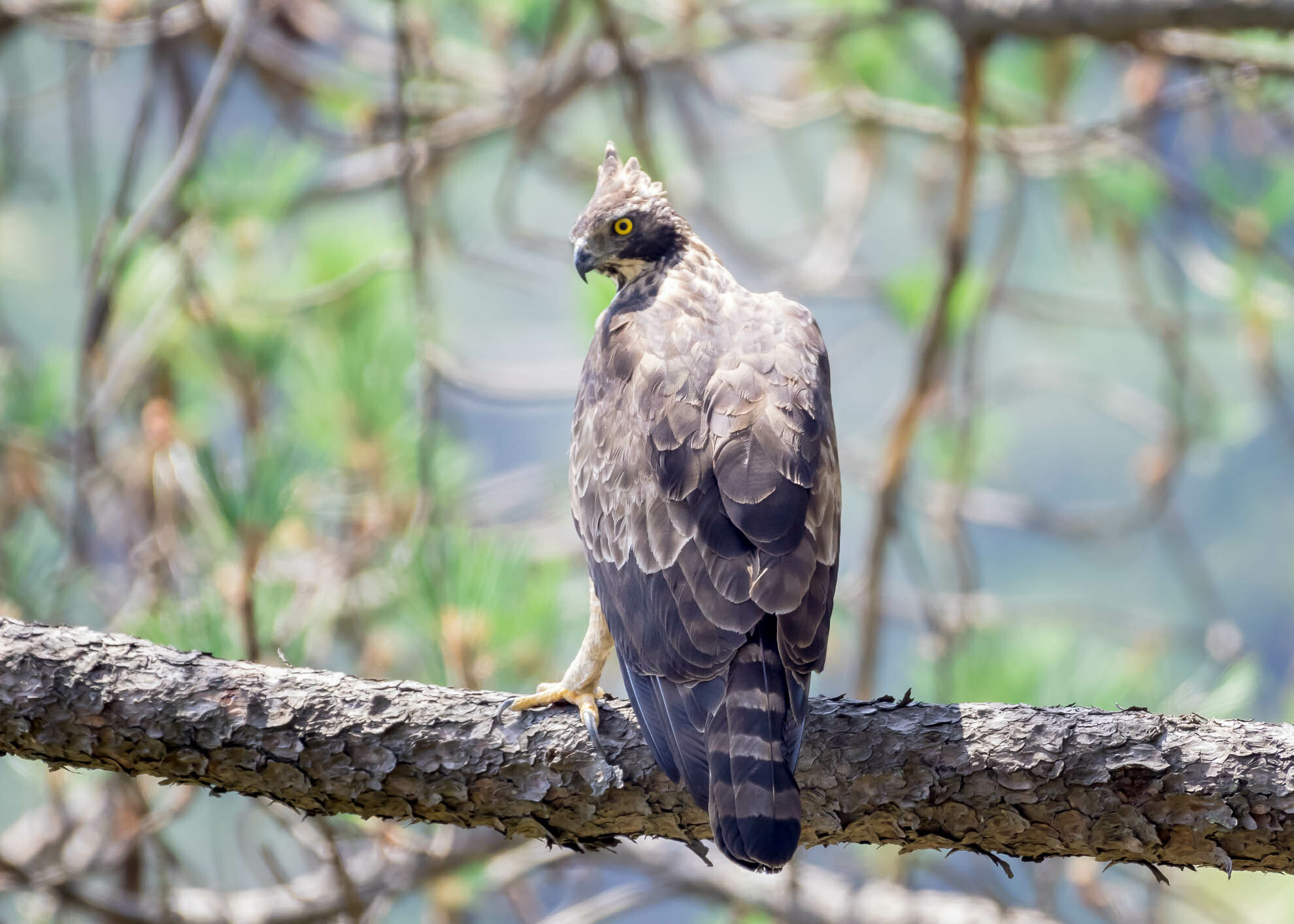
The Mountain Hawk-Eagle, also known as Hodgson’s Hawk-Eagle, inhabits the mountainous forests of Asia. Its prominent crest and powerful build make it a formidable hunter. This eagle preys on a variety of animals, including birds, mammals, and reptiles. Its sharp eyesight allows it to spot prey from great heights. The Mountain Hawk-Eagle’s call is a loud, high-pitched scream, echoing through the mountains. Deforestation and hunting have led to declines in its population, necessitating conservation efforts.
These raptors, adorned with their crown-like crests, not only captivate bird enthusiasts but also play vital roles in their respective ecosystems. Their unique adaptations and behaviors highlight the incredible diversity and complexity of the avian world.
